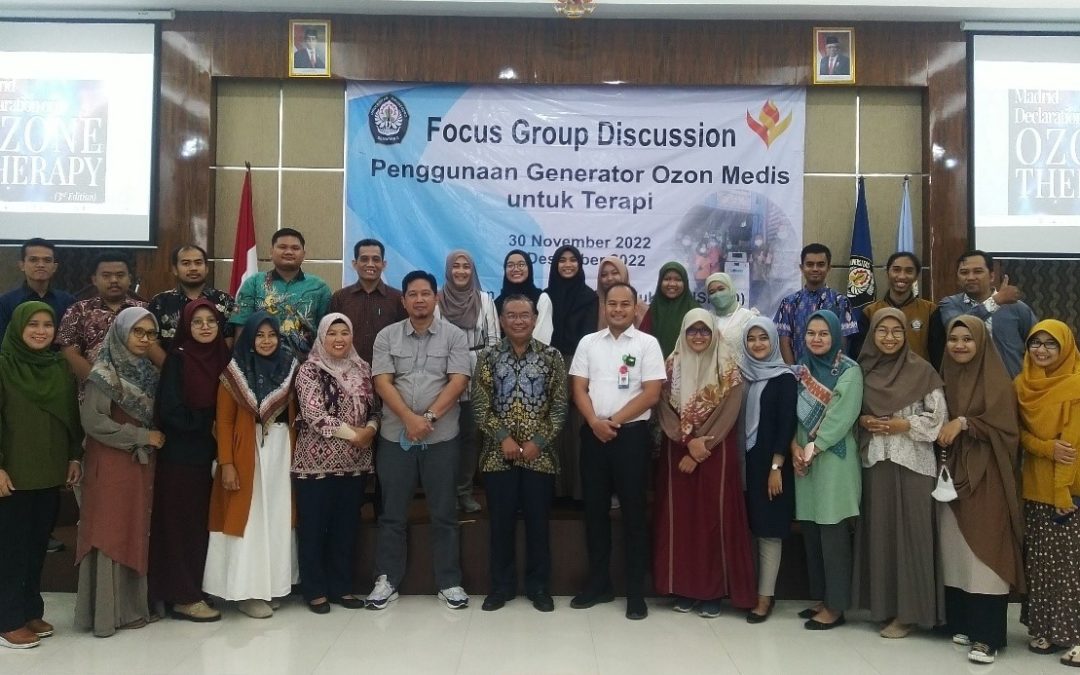An interesting and warm discussion was held on Wednesday, December 7, 2022 and November 30, 2022, at the Acyntia Prasada Hall on the 6th floor, the grandest building in the Faculty of Science and Mathematics, Diponegoro University. The discussion, which was packaged in the form of a Focus Group Discussion (FGD), was entitled The Use of Medical Ozone Generators for Therapy. The discussion was attended by nurses from Diponegoro University, Health Polytechnic of the Ministry of Health Semarang, Indonesian Wound Care Association, doctors and postgraduate students at Diponegoro University. The FGD began with a short video screening of “Medical Ozone Generator by Diponegoro University”. This show provides information about a bit of the medical ozone generator research journey until the formation of a prototype that refers to the standards recommended by the International Scientific Committee on Ozone Therapy in 2020. The second video presentation is in the form of “How to Use a Medical Ozone Generator for Diabetes Militus Wound Therapy”, which is a video tutorial on the operation of the generator, choosing the right dosage and how to install the correct ‘bagging’ on the Diabetes Militus wound.
Prof. Dr. Muhammad Nur, DEA as the chief researcher of the Development of a Standard Medical Ozone Generator for Meeting the needs of National Medical Applications with productive innovative research funding (RISPRO)-Commercial LPDP, had the opportunity to give an initial speech on the discussion. M. Nur said that research in the field of plasma has been started since 1999 and in 2017 discussed with colleagues a doctor who told about medical ozone technology using an ozone generator that has specifications for double barrier reactor technology (Double Dielectric Barrier Discharge-DDBD), equipped with ozone destruction, and uses pure oxygen as the input material for gases. DDBD technology is used so that there is no ROS interaction with the electrodes, so that no contaminants enter the wound. Ozone destruction as a solution step so that the remaining ozone in the “bagging” does not come out and be destroyed into oxygen. This is to ensure the safety of nurses as well as patients from exposure to ozone which is oxidative. Meanwhile, oxygen used as the main ingredient for ozone formation uses medical-grade oxygen. This is in line with the recommendations issued by the International Scientific Committee on Ozone therapy in 2020 in Madrid, Spain. So, this recommendation of the medical ozone generator standard can be used as a reference for us to encourage medical ozone generators to have formal legal aspects in Indonesia, of course by communicating with various elements and stakeholders related to.
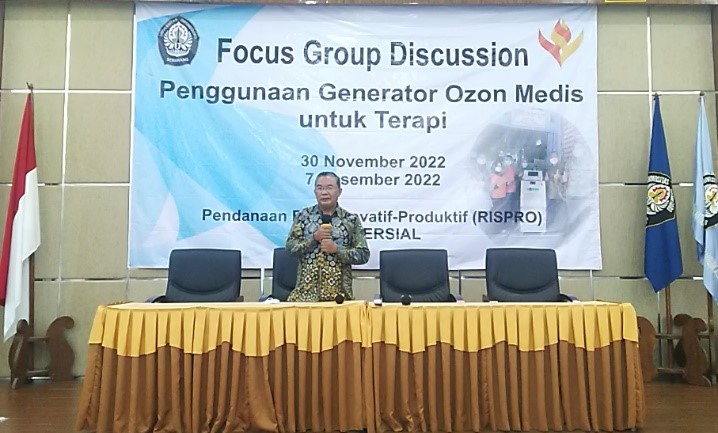
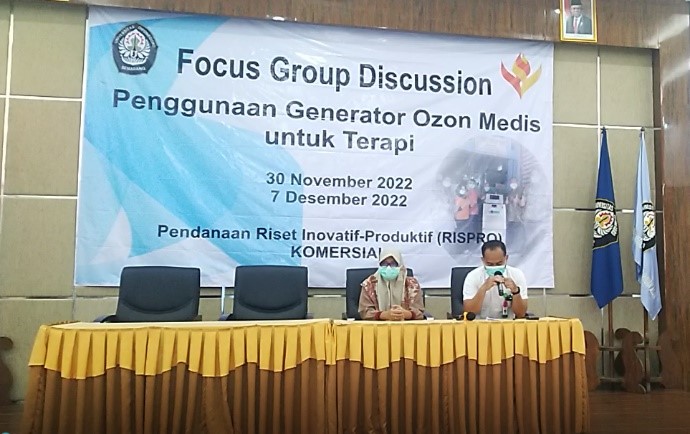
The presentation of the material in the discussion was delivered by Doctor Benny and Doctor Fadhilah by taking the title The Effect of Ozone Bagging (M-Ozone) on the Healing Process of Diabetes Militus (DM) Ulcers. This is the result of research conducted at the DM lukan treatment clinic located in Grobogan and Bandarhajo Health Center, North Semarang. The study was conducted on patients with DM wounds with standard treatment as a control and treatment with ozone bagging intervention. The results showed that medical ozone therapy is able to accelerate the healing of DM lukan and stimulate the growth of new tissues so that DM wounds close faster.
The positive progress of the results of this study is good news for people who care for diabetes militus wounds. This result also sparked an interesting and interactive discussion from FGD participants. Mrs. Henny, who is a nurse from the Lahat area, Sumatra who is studying at the Health Polytechnic of the Ministry of Health (Poltekkes) Semarang, gave a positive appreciation for medical ozone technology because it has been proven to accelerate the healing of DM wounds and provide feedback on whether the ozone given will have an impact on the tissues around healthy DM wounds? Doctor Benny explained that the adjuvant ozone bagging therapy given to DM wounds has referred to the dosage standards set by the international scientific committee of ozone therapy, namely the initial treatment using a dose of 80-90 mg / l for 5 minutes and the second treatment and so on using a dose level of 25-30 mg / l for 20 minutes. This dosing has no impact on the healthy tissue surrounding the DM wound. In addition to providing appreciation and responses, Mrs. Henny also gave feedback in the form of suggestions on this medical ozone generator technology so that in the future a portable medical ozone generator was born so as to facilitate home care services, especially in remote areas and outside Java, it is also necessary to think about how the “bagging” model is if the DM wound is other than on the legs, for example: back, thighs, or other places. The same was also said by Mr. Lelik A, a DM wound care practitioner and also active in the DM wound care Association. He also added that this portable generator can later be lifted at the international level, because the International State most of the medical ozone generators are still large, on the other hand, portable medical ozone generators will facilitate the distribution of services outside Java and far from major cities. Of course, this feedback was responded very enthusiastically by Prof. Dr. Muhammad Nur, DEA who is also the inventor of this technology, that in the future will be developed for portable generators that are easy and light to carry everywhere, this is assured that the master and concept of this technology has been mastered so that the manufacture of generators can be adjusted to market needs. In addition, the bagging model can also be prepared by using molding that is adjusted to the place of the DM wound.
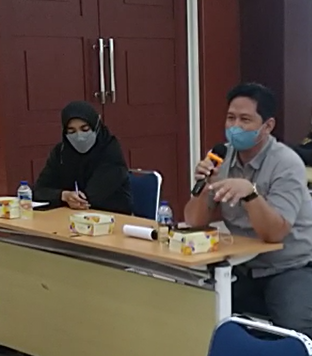
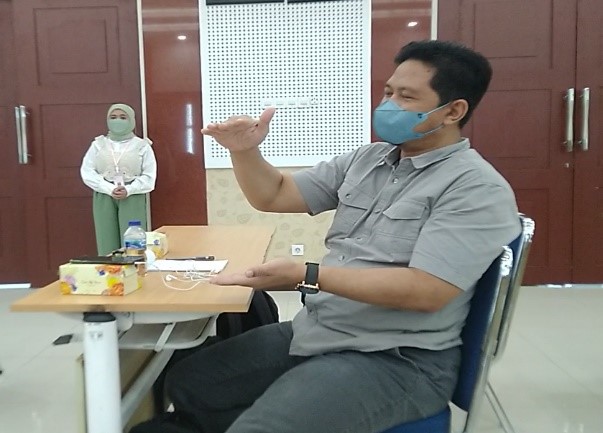
Mr. Lelik A added that currently there are more than 20,000 certified nurses under the umbrella of the association of wound nurses who have been spread in Indonesia. It also automatically has a standard of wound care. So, in this research that has been conducted by Doctor Benny and Doctor Fadhilah, the standard of dry damp treatment refers to the standard from where? Because nowadays the standard dry damp treatment is no longer used, and modern treatments have been evenly distributed. In response to this, Benny’s doctor explained that the dry damp standard refers to the standard carried out at RSUP Dr. Karyadi, and these standards are also still used in several hospitals outside Java such as Manado, Sulawesi.
To be Continue……

